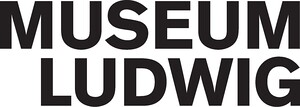The Schröder Donation
July 13–September 29, 2019
Heinrich-Böll-Platz
50667 Cologne
Germany
Hours: Tuesday–Sunday 10am–6pm
T +49 221 22126165
info@museum-ludwig.de
In the 1990s a new art scene began to form in Cologne. New galleries, magazines such as Texte zur Kunst, and the alternative exhibition space Friesenwall 120 were started. Alexander Schröder followed these developments from Berlin. Already as an art student at the Hochschule der Künste Berlin, he began collecting art from the 1990s and 2000s with his special eye. Today his collection exemplifies the idiosyncratic and sensual side of this era, which was shaped by Conceptual Art. It demonstrates the significance of artist groups and collaborations in changing constellations at the time. Proximity and distance, connections and competition, inclusion and exclusion existed in productive friction with each other.
Now the Alexander Schröder and his family have donated 29 works from their collection, including large-scale installations, to the Museum Ludwig by artists such as Kai Althoff, Cosima von Bonin, Tom Burr, Lukas Duwenhögger, Isa Genzken, and Danh Võ. The exhibition Family Ties: The Schröder Donation presents these works to the public along with a selection from the Museum Ludwig collection. It focuses on art at the turn of the 21st century and examines the special conditions that existed in Cologne, also in relationship to New York.
Director Yilmaz Dziewior: “I am delighted that with this donation, numerous works that were originally closely linked to Cologne or first exhibited here are now permanently back in their place of origin.”
Around 1995, the field of art expanded. Proclaimed art movements and schools were replaced with group affiliations. Family-like structures or networks shaped working methods and thus also aesthetic decisions. In her work, Cosima von Bonin equates friends and role models with family ties. By contrast, Kai Althoff translates ambivalent group dynamics into powerful works that deal with the longing or compulsion associated with belonging to a group. Artists entered into collaborations that were less based on the works themselves than on the process. They include Andrea Fraser, Renée Green, Christian Philipp Müller, and Nils Norman. Their working methods sometimes differed: the self-proclaimed bohemian, the (temporary) collective, and the temporary network in constant flux based on specific questions with an open exchange were three possible models. The writings of the sociologist Pierre Bourdieu were an important reference point for these artists who engaged with Institutional Critique. Bourdieu describes the relationship to role models as a “strategy of belonging,” among other things. Renée Green prefers to speak of contact zones. She uses them to outline genealogies that, in contrast to previous traditions, do not refer to a linear history or origin, but instead portray history as present and fragmentary. Lukas Duwenhögger has a similar approach: his own histories of self-selected references replace the biological understanding of family. The concept of family ties is evident in a variety of ways in the featured artworks from the 1990s and early 2000s. The social becomes material for art.
Artists from the donation
Kai Althoff, Cosima von Bonin, KP Brehmer, Tom Burr, Lukas Duwenhögger, Isa Genzken, Renée Green, Dan Graham, Ull Hohn, Hilary Lloyd, Lucy McKenzie, Christian Philipp Müller, Nils Norman, Stephen Prina, Danh Võ
Artists from the Museum Ludwig collection
Juliette Blightman, Tom Burr, Andrea Fraser, Isa Genzken, Renée Green, Ull Hohn, Christian Philipp Müller, Danh Võ, Stephen Willats
Curator
Barbara Engelbach
The exhibition is generously supported by the Ministry of Culture and Science of the state of North Rhine-Westphalia, the Landschaftsverband Rheinland, Dezernat Kultur und Landschaftliche Kulturpflege, the Sparkassen-Kulturstiftung Rheinland, and a grant from Sparkasse KölnBonn from the PS Zweckertrag der Lotterie des Rheinischen Sparkassen- und Giroverbandes PS Sparen und Gewinnen.
Catalogue
The exhibition catalogue documents the works from the donation with explanatory texts by Barbara Hess. Archival materials such as invitations, flyers, posters, and publications present the context of their production. All these materials, as well as the works, are arranged chronologically on a timeline that also lists the most important events in Germany and abroad in art and society in the 1990s and 2000s. A selection of central texts from the period, which are representative of the multilayered development of art, illustrate the various debates and controversies. The foreword by Yilmaz Dziewior and the essay by Barbara Engelbach outline the Museum Ludwig’s relationship to the 1990s and 2000s and show the importance of the donation to the collection.
Website and social media
The Museum Ludwig will be posting about the exhibition on its social media channels with the hashtags #MLxSchroeder and #Familienbande.


